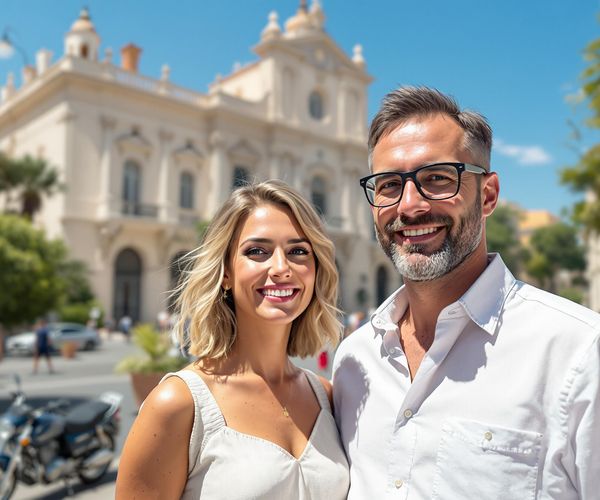
The Timeless Charm of Matera
Discover Matera, Italy's ancient city of stone, where history, culture, and stunning landscapes create an unforgettable travel experience.
Matera, a city carved out of stone, is one of the oldest continuously inhabited places on Earth. Nestled in the region of Basilicata, southern Italy, Matera's ancient cave dwellings, known as 'Sassi,' offer a glimpse into a world where history and modernity coexist. Walking through the narrow alleys and winding streets, you will feel transported back in time, surrounded by centuries-old architecture and breathtaking landscapes. One of the city's most remarkable features is its unique cave churches, adorned with frescoes dating back to the Middle Ages. These sacred spaces are a testament to Matera's rich religious and cultural heritage. Matera's stunning views from the various lookout points provide panoramic vistas of the surrounding valleys and hills, making it a photographer's paradise. In addition to its historical significance, Matera has a vibrant cultural scene. The city hosts numerous events and festivals throughout the year, including the Matera International Film Festival and the Madonna della Bruna festival. Local cuisine, with its rustic flavors and traditional recipes, is a culinary delight, featuring dishes such as orecchiette pasta and lamb stew. Matera's blend of history, culture, and natural beauty makes it a must-visit destination for any traveler.
Local tips in Matera
- Wear comfortable shoes as Matera's streets can be steep and uneven.
- Visit the Sassi di Matera early in the morning to avoid crowds.
- Try local specialties such as 'crapiata,' a traditional soup made with legumes and grains.
- Take a guided tour to learn more about the history and significance of the cave dwellings.
- Stay overnight in one of the renovated cave hotels for a unique experience.
Neighbourhoods in Matera
The Timeless Charm of Matera
Matera, a city carved out of stone, is one of the oldest continuously inhabited places on Earth. Nestled in the region of Basilicata, southern Italy, Matera's ancient cave dwellings, known as 'Sassi,' offer a glimpse into a world where history and modernity coexist. Walking through the narrow alleys and winding streets, you will feel transported back in time, surrounded by centuries-old architecture and breathtaking landscapes. One of the city's most remarkable features is its unique cave churches, adorned with frescoes dating back to the Middle Ages. These sacred spaces are a testament to Matera's rich religious and cultural heritage. Matera's stunning views from the various lookout points provide panoramic vistas of the surrounding valleys and hills, making it a photographer's paradise. In addition to its historical significance, Matera has a vibrant cultural scene. The city hosts numerous events and festivals throughout the year, including the Matera International Film Festival and the Madonna della Bruna festival. Local cuisine, with its rustic flavors and traditional recipes, is a culinary delight, featuring dishes such as orecchiette pasta and lamb stew. Matera's blend of history, culture, and natural beauty makes it a must-visit destination for any traveler.
When is the best time to go to Matera?
Iconic landmarks you can’t miss
Sassi di Matera
Discover the timeless beauty and rich history of Sassi di Matera, where ancient cave dwellings meet stunning architectural wonders.
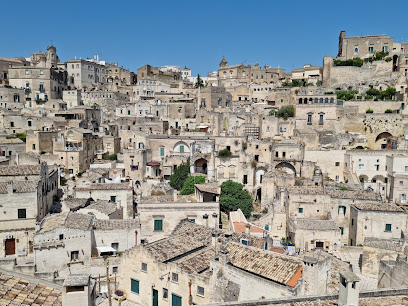
Palombaro lungo
Discover the underground beauty of Palombaro Lungo in Matera, a UNESCO World Heritage Site that showcases Italy's rich architectural history.
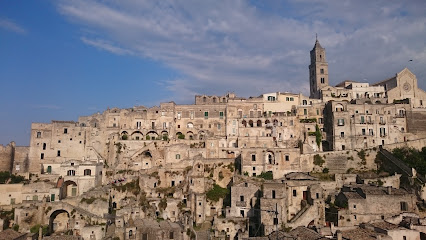
Belvedere di Piazza Giovanni Pascoli
Visit Belvedere di Piazza Giovanni Pascoli for breathtaking views of Matera's ancient cave dwellings and rich historical architecture.

Parco Regionale della Murgia Materana
Discover the breathtaking landscapes, rich biodiversity, and ancient history at Parco Regionale della Murgia Materana, an unforgettable Italian national reserve.
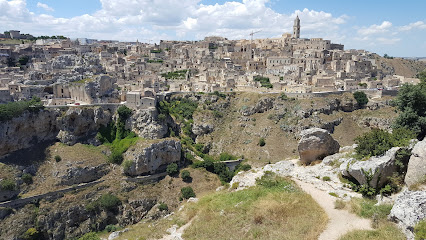
Cattedrale di Maria Santissima della Bruna e Sant'Eustachio
Discover the architectural beauty and historic significance of Cattedrale di Maria Santissima della Bruna e Sant'Eustachio in Matera, Italy.
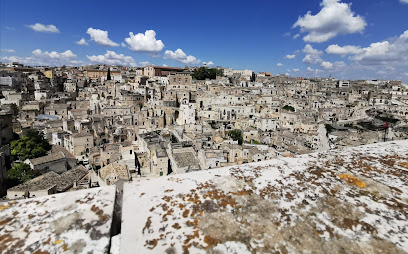
Casa Grotta nei Sassi di Matera
Immerse yourself in the ancient cave dwellings of Casa Grotta nei Sassi di Matera, a UNESCO World Heritage Site that reveals the rich cultural heritage of Italy.
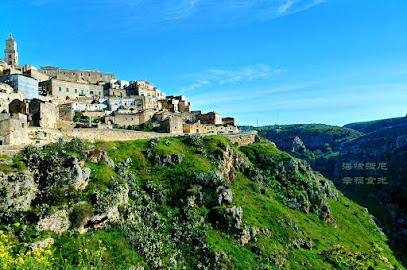
Visite guidate Sassi di Matera di Karma Viaggi
Explore the enchanting Sassi di Matera, a UNESCO World Heritage site with ancient cave dwellings and stunning landscapes in Italy.
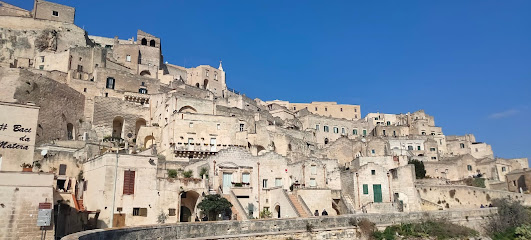
Sasso Caveoso
Explore Sasso Caveoso, a UNESCO World Heritage site in Matera, Italy, featuring ancient cave dwellings and breathtaking landscapes that tell a story of history.
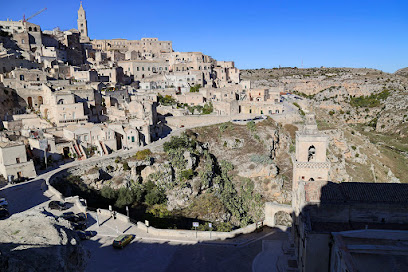
Casa Noha
Explore Casa Noha, a heritage museum in Matera showcasing local history through immersive exhibits and stunning architecture in a UNESCO World Heritage Site.
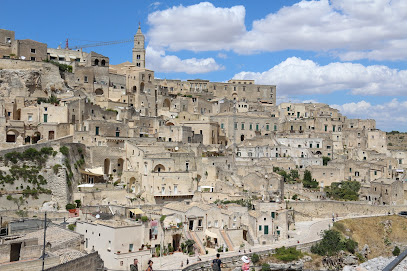
Casa Cava
Immerse yourself in the cultural richness of Matera at Casa Cava, a unique venue blending history with contemporary art and music.
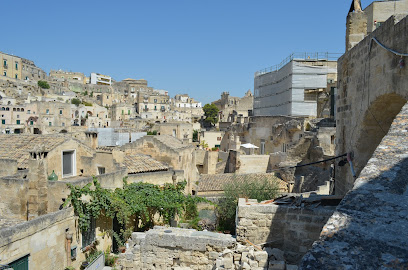
Tramontano castle
Discover the enchanting Tramontano Castle in Matera, an exquisite historical site that offers stunning views and rich cultural heritage.
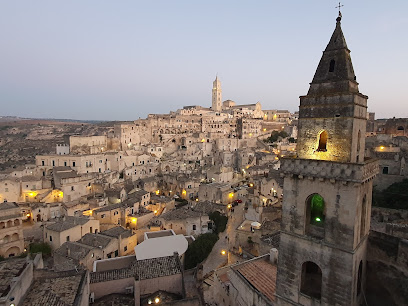
Crypt of Original Sin
Discover the enchanting Crypt of Original Sin in Matera, Italy, where history and art intertwine within stunning frescoed rock chambers.
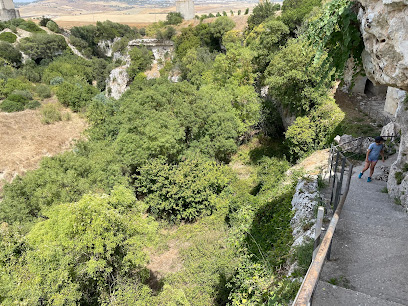
Palazzo Lanfranchi
Explore Palazzo Lanfranchi, an artistic gem in Matera showcasing stunning art and breathtaking views of the ancient city.
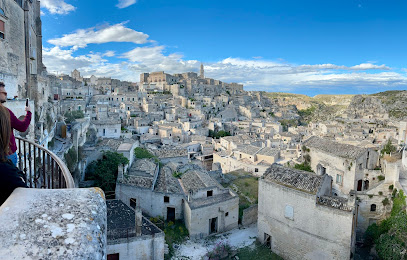
Church of Saint Peter 'Barisano'
Discover the art and history of the Church of Saint Peter 'Barisano' in Matera, a stunning Baroque masterpiece amidst breathtaking landscapes.

Info Matera Tourist Information
Explore Matera: A UNESCO World Heritage Site showcasing stunning cave dwellings and rich history in the heart of Southern Italy.
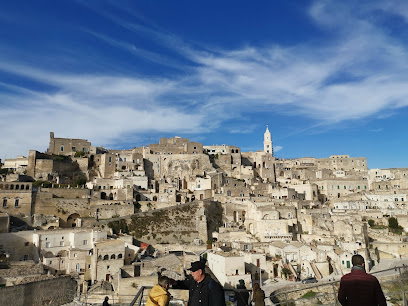
Unmissable attractions to see
Belvedere di Piazza Giovanni Pascoli
Experience stunning panoramic views of Matera's historic landscapes at Belvedere di Piazza Giovanni Pascoli, a top tourist attraction.
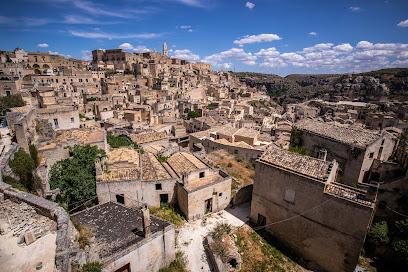
Parco Regionale della Murgia Materana
Explore the stunning landscapes and rich history of Parco Regionale della Murgia Materana, a UNESCO World Heritage site in Italy.
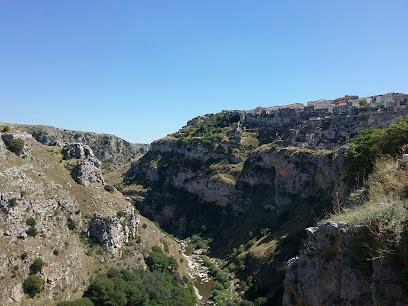
Parco Naturale Regionale Terra delle Gravine
Experience the breathtaking landscapes and rich biodiversity of Parco Naturale Regionale Terra delle Gravine in Taranto, Italy, a perfect outdoor escape.
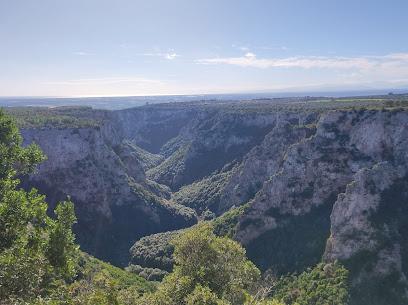
Cattedrale di Maria Santissima della Bruna e Sant'Eustachio
Explore the awe-inspiring Cattedrale di Maria Santissima della Bruna e Sant'Eustachio in Matera, a stunning blend of history, architecture, and breathtaking views.
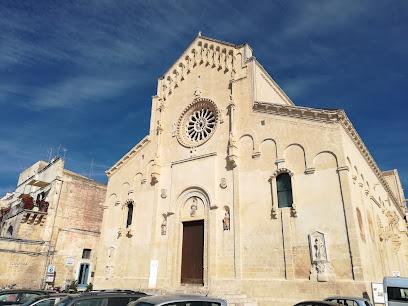
Casa Grotta nei Sassi di Matera
Discover the rich history and stunning cave dwellings of Casa Grotta nei Sassi di Matera, a UNESCO World Heritage Site that tells the story of ancient life.
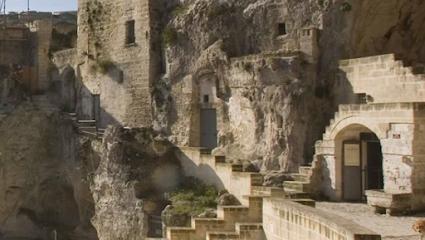
Martulli Viaggi - Tour & Experience
Explore the wonders of Matera with Martulli Viaggi, your premier travel agency for personalized tours and unique experiences in this historic city.
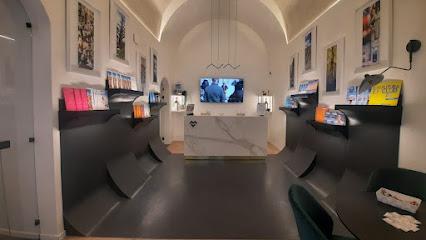
Sasso Caveoso
Discover the rich history and stunning landscapes of Sasso Caveoso, a UNESCO World Heritage site in Matera, Italy, where ancient cave dwellings come to life.
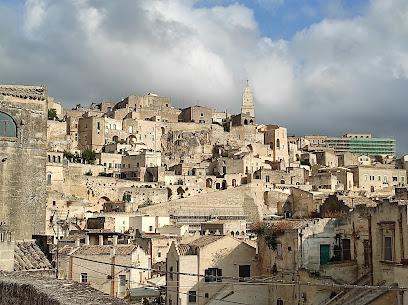
Castle Park
Discover the tranquil beauty and historical charm of Castle Park in Matera, a perfect escape for relaxation and exploration.
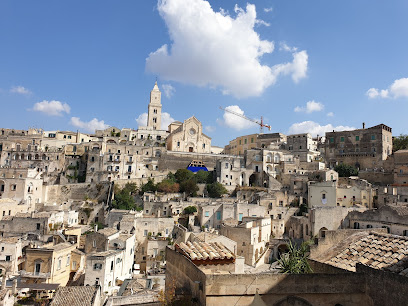
Cathedral of Saint Mary of the Assumption
Explore the Cathedral of Saint Mary of the Assumption, a magnificent Romanesque marvel in Bitonto, rich in history and architectural splendor.
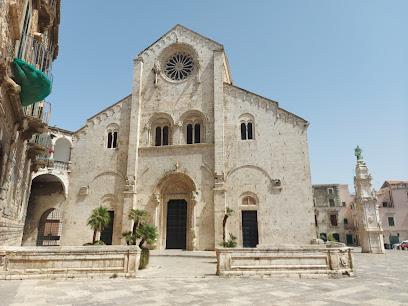
Castello Tramontano
Explore the historic Castello Tramontano in Matera, a stunning medieval castle offering breathtaking views and rich cultural heritage.

Casa Cava
Discover the heart of Matera's cultural scene at Casa Cava, where history meets contemporary art in stunning cave surroundings.
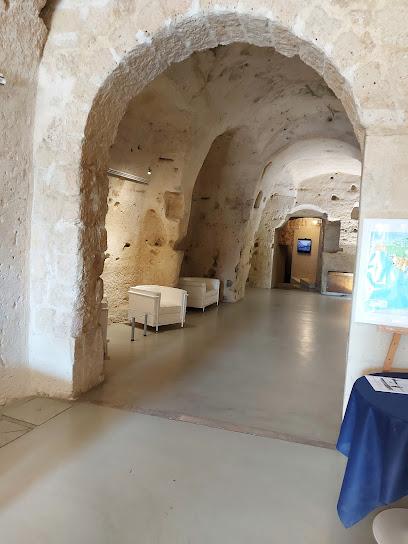
Castello Normanno-Svevo di Sannicandro
Explore the rich history and stunning architecture of Castello Normanno-Svevo in Sannicandro di Bari, a must-visit for every traveler.
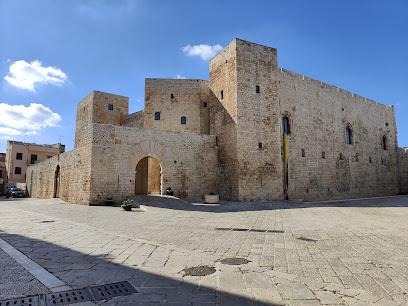
Chiesa di San Giovanni Battista
Discover the spiritual and artistic splendor of Chiesa di San Giovanni Battista, a must-visit Catholic church in the heart of Matera, Italy.
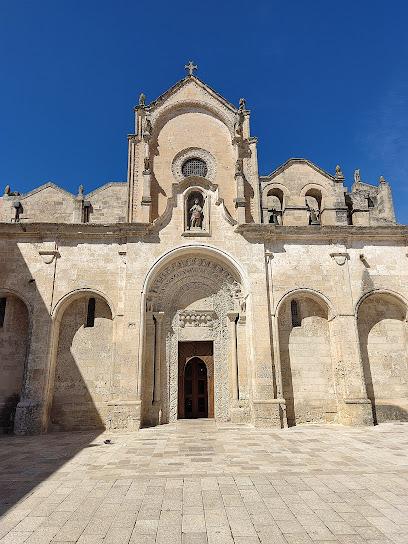
Palazzo Lanfranchi
Discover the artistic treasures of Palazzo Lanfranchi, a historic museum in Matera showcasing Italy's rich cultural heritage amidst stunning landscapes.
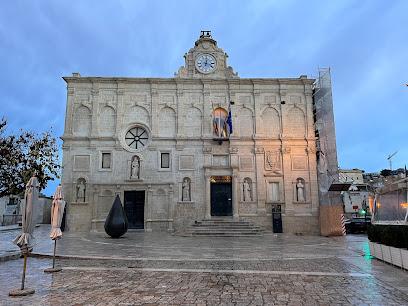
Cava Del Sole
Experience the unique blend of music and history at Cava Del Sole, Matera's extraordinary concert hall carved into ancient limestone cliffs.
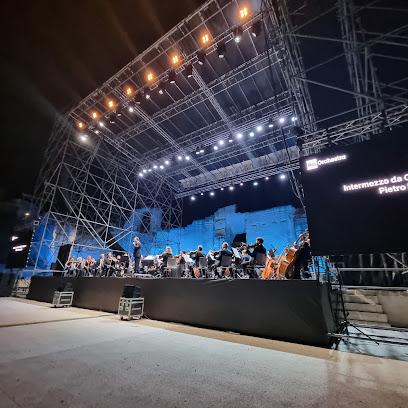
Essential places to dine
Stano
Experience authentic Italian cuisine at Stano in Matera - where tradition meets flavor in every dish.
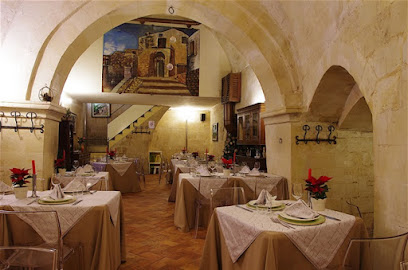
Trattoria del Caveoso
Experience authentic Italian cuisine at Trattoria del Caveoso in Matera - where tradition meets flavor amidst breathtaking scenery.
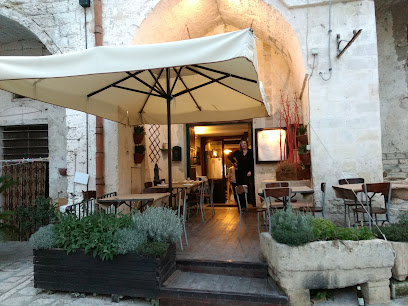
La Pignata
Experience authentic Italian cuisine at La Pignata in Matera - renowned for its delicious pizzas and warm hospitality.
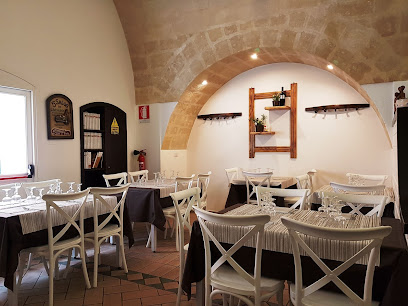
Il Terrazzino
Experience the heart of Italian cuisine at Il Terrazzino in Matera – where every dish tells a story.
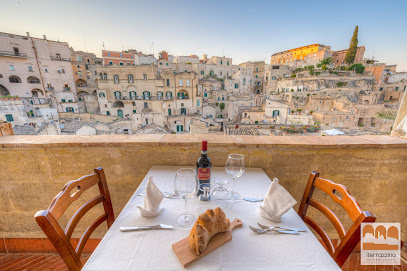
Ristorante Spaghetteria Miseria e Nobiltà Matera
Experience authentic Italian flavors at Ristorante Spaghetteria Miseria e Nobiltà in Matera—where every dish tells a story.
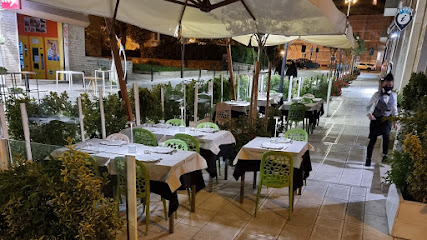
Osteria MateraMì
Experience traditional Italian flavors at Osteria MateraMì in beautiful Matera - where every dish tells a story.
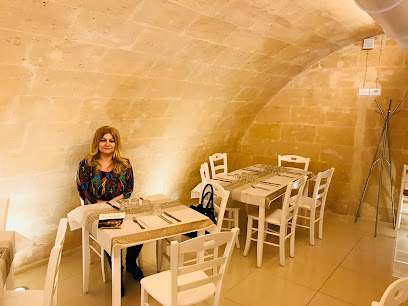
Ristorante Soul Kitchen - Cucina per l' Anima
Experience authentic Italian cuisine at Ristorante Soul Kitchen in Matera - where every dish tells a story.
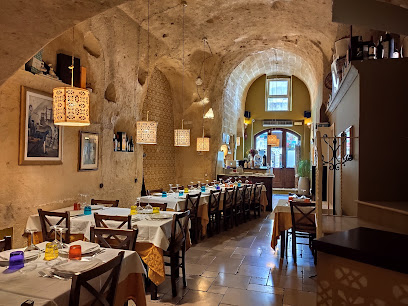
Il Rusticone
Discover authentic Italian flavors at Il Rusticone in Matera - where every pizza tells a story.
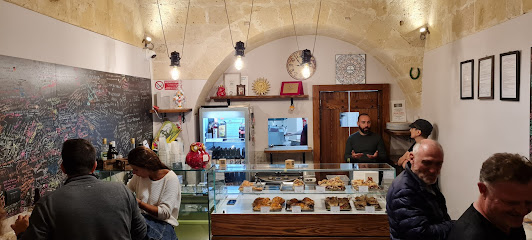
La Lopa
Experience authentic Italian flavors at La Lopa in Matera - where tradition meets culinary excellence in a unique cave setting.
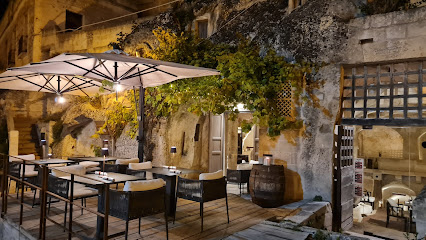
Ristorante Pizzeria Van Gogh
Experience authentic Italian cuisine at Ristorante Pizzeria Van Gogh in Matera - renowned for its delicious pizzas and fresh seafood.
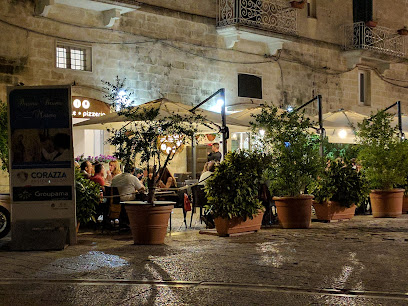
Osteria al Casale
Experience authentic Italian flavors at Osteria al Casale in Matera - a culinary haven blending tradition with modernity.
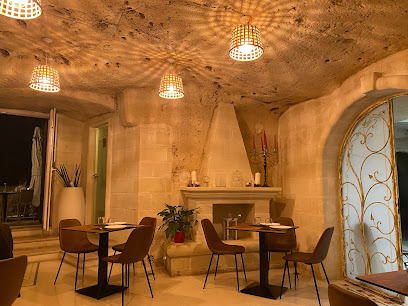
Kapunto Matera
Experience authentic Italian flavors at Kapunto Matera, where traditional recipes meet local ingredients in a warm atmosphere.

La Grotta Del Gusto
Experience authentic Italian flavors at La Grotta Del Gusto in Matera - where every dish tells a story of tradition and taste.
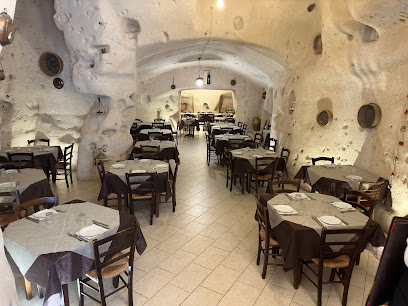
Osteria Belvedere al Vecchio Frantoio
Experience authentic Italian flavors in the heart of Matera at Osteria Belvedere al Vecchio Frantoio, where tradition meets culinary excellence.

Baccanti
Experience authentic Italian cuisine at Baccanti in Matera, where tradition meets innovation in every delicious dish.
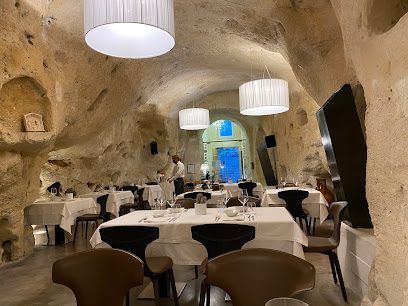
Markets, malls and hidden boutiques
BG Arte
Explore BG Arte in Matera for an authentic taste of local craftsmanship and unique handcrafted treasures.
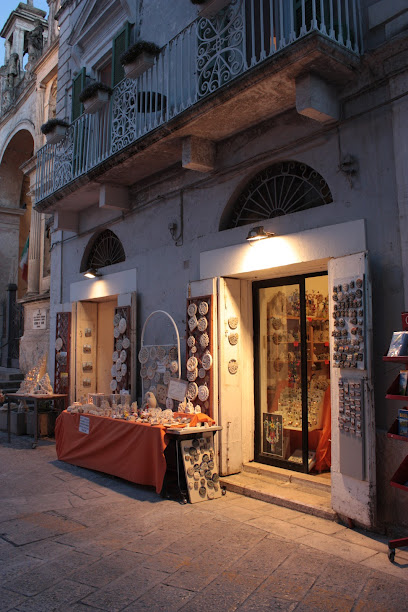
Sassi in Miniatura
Explore Sassi in Miniatura in Matera for unique souvenirs that capture the essence of this historic city's captivating cave dwellings.
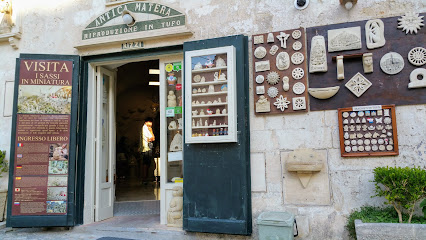
La Bottega Giù al Nord
Explore the essence of Matera at La Bottega Giù al Nord, your go-to gift shop for organic delights and local crafts.
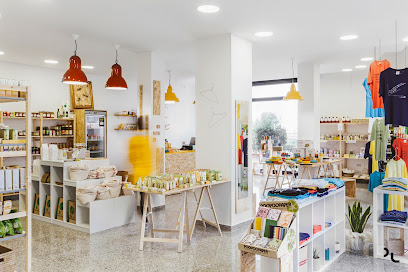
Boutique Diffusion Kitch
Explore Boutique Diffusion Kitch in Matera for unique fashion and artisanal treasures that reflect the heart of Italian culture.

Shop Bvono
Discover unique fashion at Shop Bvono, the premier dress store in Matera, blending local charm with contemporary style.
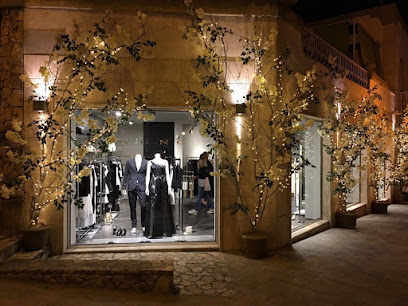
MAX&Co.
Discover the chic elegance of women's fashion at MAX&Co. in Matera, where contemporary style meets timeless beauty.
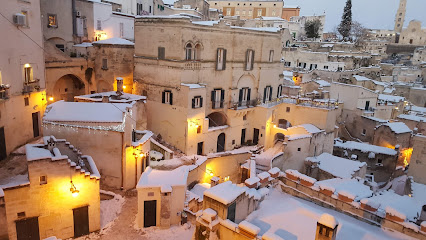
Tezenis
Discover trendy clothing for all ages at Tezenis in Matera, where fashion meets affordability in a vibrant shopping atmosphere.
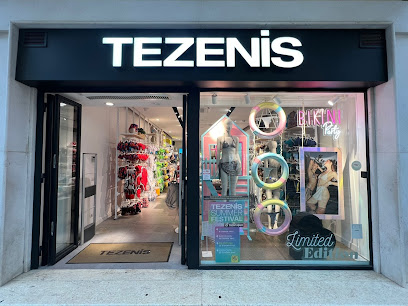
Lucia Nicastro Concept Store
Explore the Lucia Nicastro Concept Store in Matera for unique women's fashion that captures the spirit of Italian style and craftsmanship.
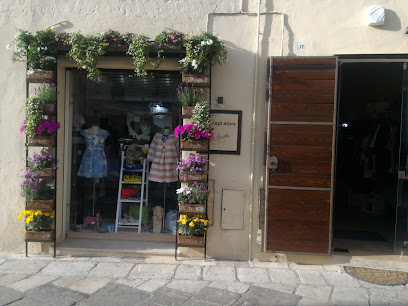
Stefania Boutique
Explore the chic elegance of Stefania Boutique in Matera, where fashion meets Italian craftsmanship in a delightful shopping experience.
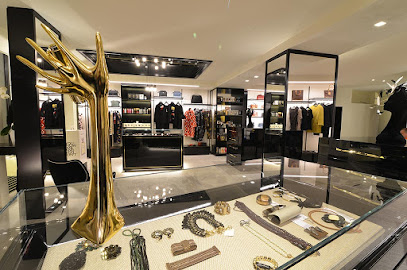
Boutique Anna
Explore Boutique Anna in Matera for unique women's fashion and a delightful shopping experience amid the city's historic charm.
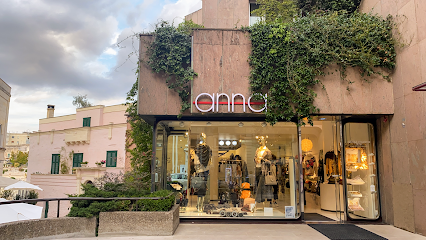
Swarovski Boutique - Didio snc
Discover the elegance of Swarovski in Matera, showcasing exquisite jewelry, fashion accessories, and stunning craftsmanship in a luxurious setting.

Symbolum
Discover Symbolum in Matera: your destination for unique gifts, books, and exquisite local craftsmanship.
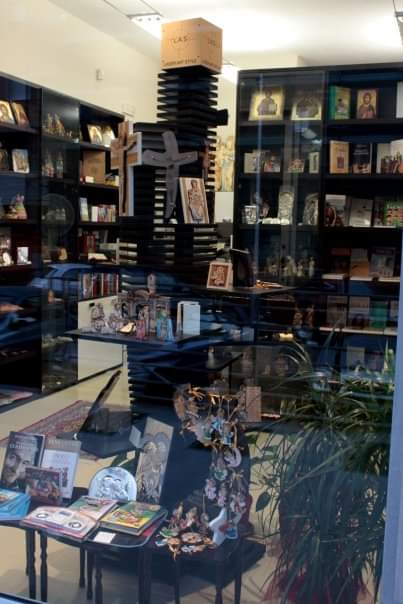
ARTEREGO
Explore ARTEREGO in Matera for unique handmade crafts and exquisite jewelry that celebrate local artistry and culture.
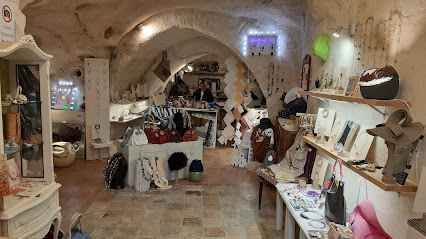
Scandiffio
Discover Scandiffio, Matera's chic clothing store offering a blend of local style and contemporary fashion, perfect for unique shopping experiences.

Arte Moda boutique
Explore Arte Moda boutique in Matera for unique clothing and accessories that capture the essence of Italian style and craftsmanship.
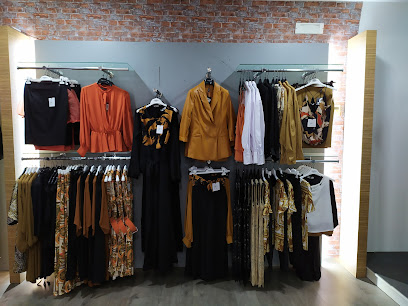
Essential bars & hidden hideouts
AREA 8
Discover the vibrant nightlife of Matera at AREA 8, a premier cocktail bar and event venue offering creative drinks and a lively atmosphere.
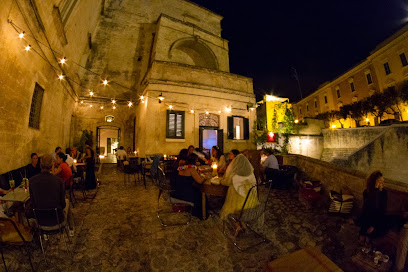
Cream Irish Pub Guinness
Savor the essence of Irish culture at Cream Irish Pub, where delicious food meets a lively atmosphere in the heart of Matera.
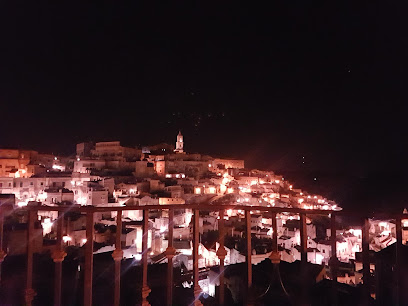
Central Pub
Experience the vibrant atmosphere of Central Pub in Matera, where delicious hamburgers and craft drinks create a perfect culinary retreat.
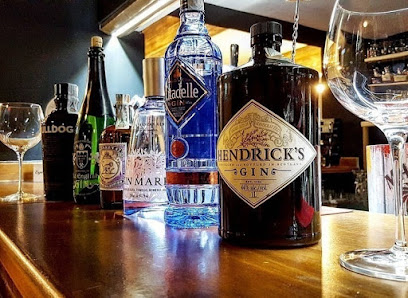
galleria coffe music art
Discover the vibrant Galleria Coffee Music Art in Matera, where art, music, and culinary delights converge for an unforgettable experience.
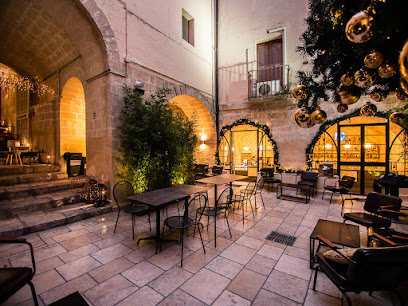
zipa cafè
Discover the unique charm of Zipa Cafè, a perfect retreat for tourists in the historic city of Matera, offering delightful drinks and snacks.
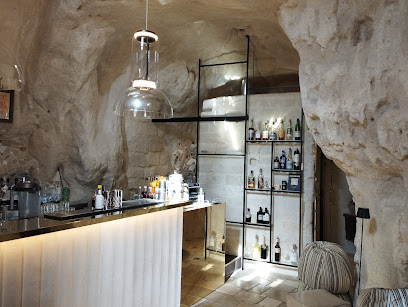
Clint Urban Kitchen
Experience the vibrant fusion of American and Italian cuisine at Clint Urban Kitchen in Matera, where every meal is a celebration of flavor.
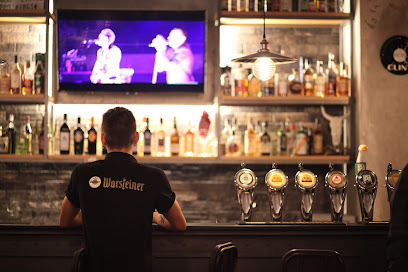
L'Antica Credenza - Bistrot
Discover the authentic flavors of Matera at L'Antica Credenza, a charming bistro offering local specialties and a cozy atmosphere.
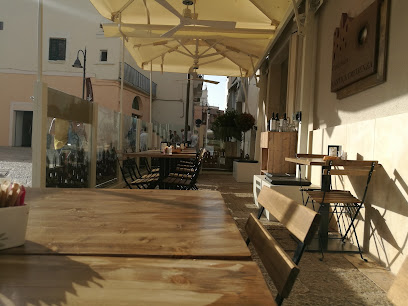
HEMINGWAY'S ITALIAN BAR E RESTAURANT
Discover the authentic taste of Italy at Hemingway's Italian Bar e Ristorante, a charming bistro in the heart of Matera, perfect for food lovers.
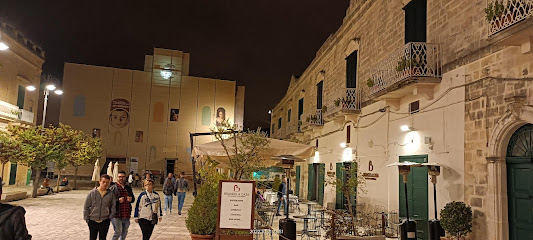
Monkey Drink House
Experience the best of Matera’s cocktail culture at Monkey Drink House, where innovative drinks meet a vibrant atmosphere.
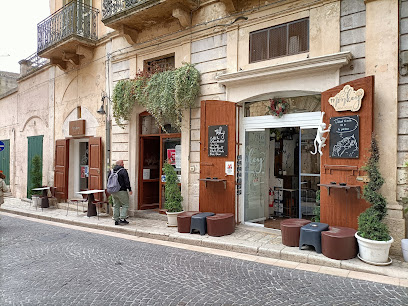
JAR - Beer, Wine & Bites
Experience the ultimate blend of craft beer, fine wines, and delicious bites at JAR in the heart of Matera.
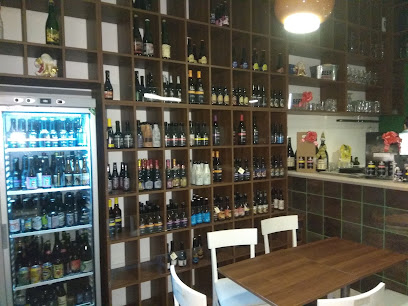
The Boulevard
Discover the lively spirit of Matera at The Boulevard, where drinks, local flavors, and great company await in a cozy bar atmosphere.
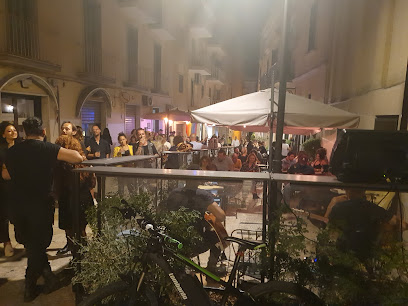
Shibuya
Experience the essence of Southern Italy at Shibuya, a cocktail bar in Matera known for its small plates and vibrant atmosphere.
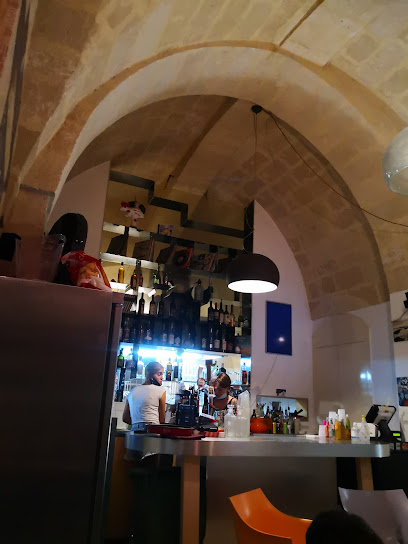
1806 Cocktail bar
Discover the art of mixology at 1806 Cocktail Bar in Matera, where every cocktail is a masterpiece crafted for your enjoyment.
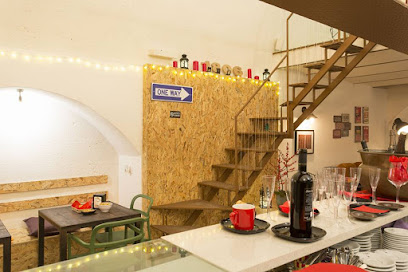
Kas67 Birreria
Discover Kas67 Birreria in Matera - a vibrant gastropub offering a unique selection of craft beers and delicious local cuisine in an inviting atmosphere.
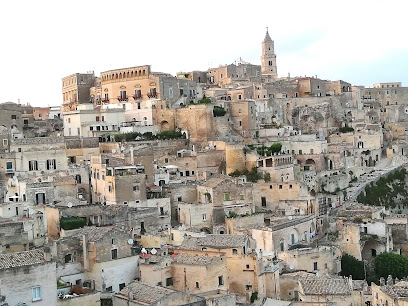
Dixi
Discover the charm of Dixi, a cozy bar in Matera, offering delightful drinks and a warm atmosphere for travelers seeking local experiences.

Travel experiences inspired by this city
Explore more travel diariesLocal Phrases
-
- HelloCiao
[chow] - GoodbyeArrivederci
[ah-ree-veh-DEHR-chee] - YesSì
[see] - NoNo
[noh] - Please/You're welcomePer favore/Prego
[pehr fah-VOH-reh/PRAY-goh] - Thank youGrazie
[GRAH-tsyeh] - Excuse me/SorryScusa/Mi dispiace
[SKOO-zah/MEE dees-PYAH-cheh] - How are you?Come stai?
[KOH-meh stah-ee] - Fine. And you?Bene. E tu?
[BEH-neh. eh too] - Do you speak English?Parli inglese?
[PAHR-lee een-GLAY-zeh] - I don't understandNon capisco
[non kah-PEES-koh]
- HelloCiao
-
- I'd like to see the menu, pleaseVorrei vedere il menù, per favore
[voh-RAY veh-DEH-reh eel MEH-noo, pehr fah-VOH-reh] - I don't eat meatNon mangio carne
[non MAHN-joh KAR-neh] - Cheers!Salute!
[sah-LOO-teh] - I would like to pay, pleaseVorrei pagare, per favore
[voh-RAY pah-GAH-reh, pehr fah-VOH-reh]
- I'd like to see the menu, pleaseVorrei vedere il menù, per favore
-
- Help!Aiuto!
[ah-YOO-toh] - Go away!Vattene!
[vaht-TEH-neh] - Call the Police!Chiama la polizia!
[KYAH-mah lah poh-LEE-tsyah] - Call a doctor!Chiama un dottore!
[KYAH-mah oon doh-TOH-reh] - I'm lostMi sono perso
[mee SOH-no pehr-soh] - I'm illSto male
[stoh MAH-leh]
- Help!Aiuto!
-
- I'd like to buy...Vorrei comprare...
[voh-RAY kohm-PRAR-eh] - I'm just lookingSto solo guardando
[stoh SOH-loh gwar-DAHN-doh] - How much is it?Quanto costa?
[KWAHN-toh KOHS-tah] - That's too expensiveÈ troppo caro
[eh TROH-poh KAH-roh] - Can you lower the price?Puoi abbassare il prezzo?
[PWEE ahb-bah-SAH-reh eel PREH-tsoh]
- I'd like to buy...Vorrei comprare...
-
- What time is it?Che ora è?
[keh OH-rah eh] - It's one o'clockÈ l'una
[eh LOO-nah] - Half past (10)Sono le dieci e mezza
[SOH-no leh dyeh-chee eh MEHT-zah] - MorningMattina
[maht-TEE-nah] - AfternoonPomeriggio
[poh-meh-REE-joh] - EveningSera
[SEH-rah] - YesterdayIeri
[YEH-ree] - TodayOggi
[OH-jee] - TomorrowDomani
[doh-MAH-nee] - 1Uno
[OO-noh] - 2Due
[DWEH] - 3Tre
[TREH] - 4Quattro
[KWAT-troh] - 5Cinque
[CHEEN-kweh] - 6Sei
[SAY] - 7Sette
[SEHT-teh] - 8Otto
[OH-toh] - 9Nove
[NOH-veh] - 10Dieci
[DYEH-chee]
- What time is it?Che ora è?
-
- Where's a/the...?Dov'è...?
[doh-VEH] - What's the address?Qual è l'indirizzo?
[kwahl eh leen-DEER-eetzoh] - Can you show me (on the map)?Puoi mostrarmi (sulla mappa)?
[PWEE mohs-TRAHR-mee SOOL-lah MAHP-pah] - When's the next (bus)?Quando passa il prossimo (autobus)?
[KWAHN-doh PAHS-sah eel PROHS-see-moh OW-toh-boo] - A ticket (to ....)Un biglietto (per ....)
[oon beel-LYEHT-toh pehr]
- Where's a/the...?Dov'è...?
History of Matera
-
Matera's history dates back to the Paleolithic era, making it one of the oldest continuously inhabited cities in the world. Early humans settled in the natural caves of the Murgia plateau, taking advantage of the area's abundant water sources and fertile land.
-
The Sassi di Matera, a complex of cave dwellings carved into limestone, are the city's most iconic feature. These dwellings have been inhabited since prehistoric times and were continuously used through the Neolithic period, the Bronze Age, and into the modern era. The Sassi are divided into two districts: Sasso Caveoso and Sasso Barisano.
-
Matera fell under Roman rule in the 3rd century BC. The Romans introduced new architectural styles and infrastructure, including roads and aqueducts. Later, during the Byzantine period, Matera became a refuge for monks who established rock-hewn churches adorned with frescoes that are still visible today.
-
In the 7th century, the Lombards conquered Matera, integrating it into the Duchy of Benevento. The city later came under Norman control in the 11th century. The Normans fortified Matera, building the Castello Tramontano, which stands as a testament to their influence.
-
During the Middle Ages and the Renaissance, Matera experienced periods of prosperity and decline. The city was part of the Kingdom of Naples and later the Kingdom of Two Sicilies. Matera's economy was primarily based on agriculture and pastoralism, with its unique cave dwellings continuing to serve as homes and workshops.
-
In the early 20th century, Matera's Sassi were declared a national disgrace due to the extreme poverty and unsanitary conditions. The Italian government forcibly relocated the residents to modern housing. The Sassi were abandoned, falling into disrepair until they were rediscovered and restored in the latter part of the century.
-
In 1993, the Sassi di Matera were designated a UNESCO World Heritage Site, recognizing their historical and cultural significance. This designation spurred efforts to restore and preserve the ancient cave dwellings, transforming Matera into a vibrant cultural tourist destination.
-
In 2019, Matera was named the European Capital of Culture. This prestigious title brought international attention to the city, highlighting its rich history, unique architecture, and vibrant contemporary culture. The event featured numerous cultural activities, exhibitions, and performances, solidifying Matera's status as a cultural hub.
Matera Essentials
-
Matera is located in the Basilicata region of southern Italy. The nearest major airport is Bari Karol Wojtyła Airport (BRI), approximately 65 kilometers away. From the airport, you can take a shuttle bus, rental car, or taxi to reach Matera. The journey typically takes around 1.5 hours by road. Alternatively, you can take a train from Bari Centrale to Matera Centrale, which offers scenic views of the Italian countryside.
-
Matera is a compact city, and many of its attractions are within walking distance. For longer trips, local buses and taxis are readily available. The city also has a bike-sharing program for those who prefer cycling. Renting a car can be a convenient option for exploring the surrounding areas, but be aware that parking in the historic center can be challenging.
-
The official currency in Italy is the Euro (EUR). Credit cards are widely accepted in hotels, restaurants, and shops. However, it is advisable to carry some cash, especially in smaller establishments and rural areas. ATMs are plentiful in Matera, but it's wise to withdraw sufficient cash before exploring remote areas.
-
Matera is generally a safe destination for tourists. However, it is advisable to take standard precautions. Avoid walking alone at night in unfamiliar areas and keep an eye on your belongings in crowded places. While Matera does not have specific high-crime areas targeting tourists, it is always best to stay vigilant and aware of your surroundings.
-
In case of emergency, dial 112 for immediate assistance. The local police station and medical facilities are available in Matera. It is recommended to have travel insurance that covers medical emergencies. For minor health issues, there are pharmacies in the city where you can purchase over-the-counter medications.
-
Fashion: Do dress comfortably but modestly; avoid overly casual attire when dining out or visiting churches. Religion: Do respect local customs and traditions; always cover your shoulders and knees when entering religious sites. Public Transport: Do be respectful and offer your seat to elderly passengers. Don’t eat or drink on public transport. Greetings: Do greet people with a friendly 'Buongiorno' (Good Morning) or 'Buonasera' (Good Evening). Eating & Drinking: Do try local delicacies and accept food offerings graciously. Don’t refuse hospitality, as it is considered impolite.
-
To experience Matera like a local, wander through the Sassi districts, where you can explore ancient cave dwellings and churches. Visit local markets to buy fresh produce and traditional Italian goods. Engage with locals, as they are often friendly and willing to share stories about the city's rich history. Don’t miss the opportunity to dine in one of the cave restaurants for a unique culinary experience. Additionally, try to attend local festivals and events to immerse yourself in the culture.
Trending Landmark in Matera
-
Sassi di Matera
-
Palombaro lungo
-
Belvedere di Piazza Giovanni Pascoli
-
Parco Regionale della Murgia Materana
-
Cattedrale di Maria Santissima della Bruna e Sant'Eustachio
-
Casa Grotta nei Sassi di Matera
-
Visite guidate Sassi di Matera di Karma Viaggi
-
Sasso Caveoso
-
Casa Noha
-
Casa Cava
-
Tramontano castle
-
Crypt of Original Sin
-
Palazzo Lanfranchi
-
Church of Saint Peter 'Barisano'
-
Info Matera Tourist Information
Nearby Cities to Matera
-
Things To Do in Bari
-
Things To Do in Ravello
-
Things To Do in Amalfi
-
Things To Do in Pompeii
-
Things To Do in Positano
-
Things To Do in Sorrento
-
Things To Do in Herculaneum
-
Things To Do in Naples
-
Things To Do in Capri
-
Things To Do in Vlorë
-
Things To Do in Durres
-
Things To Do in Dubrovnik
-
Things To Do in Patos
-
Things To Do in Kavajë
-
Things To Do in Herceg Novi













